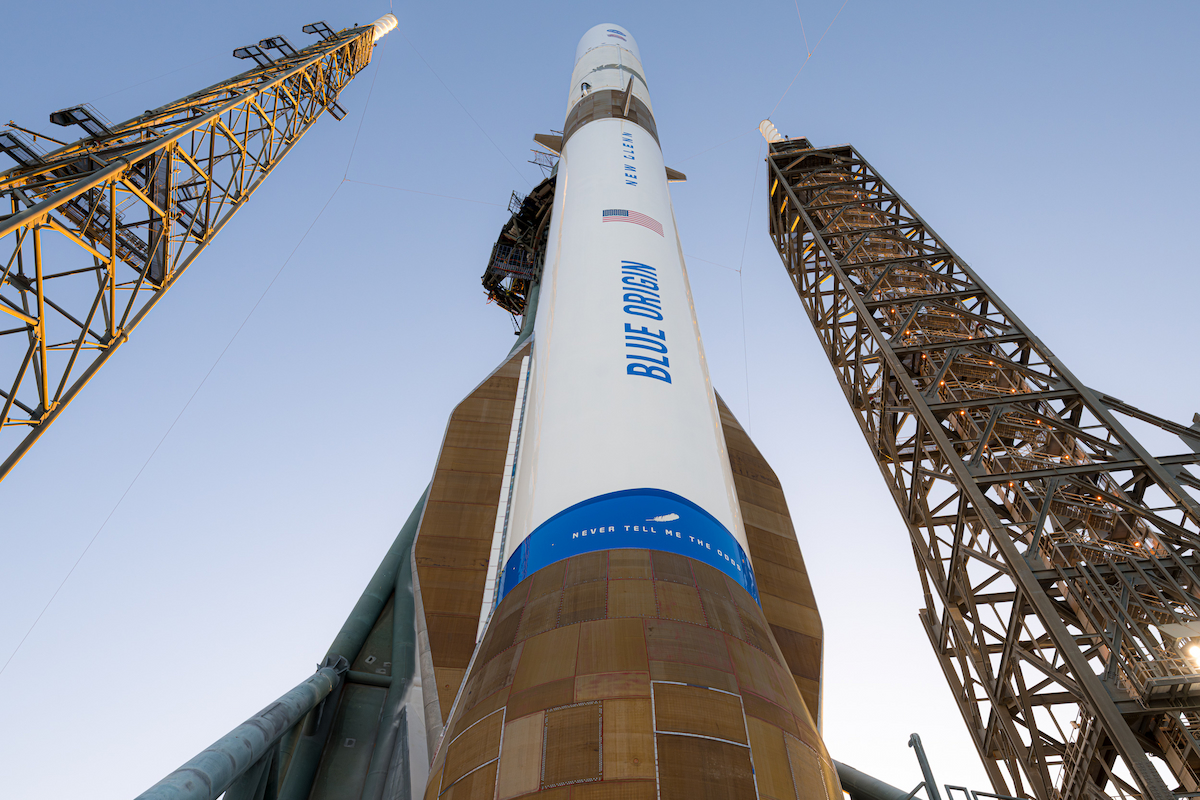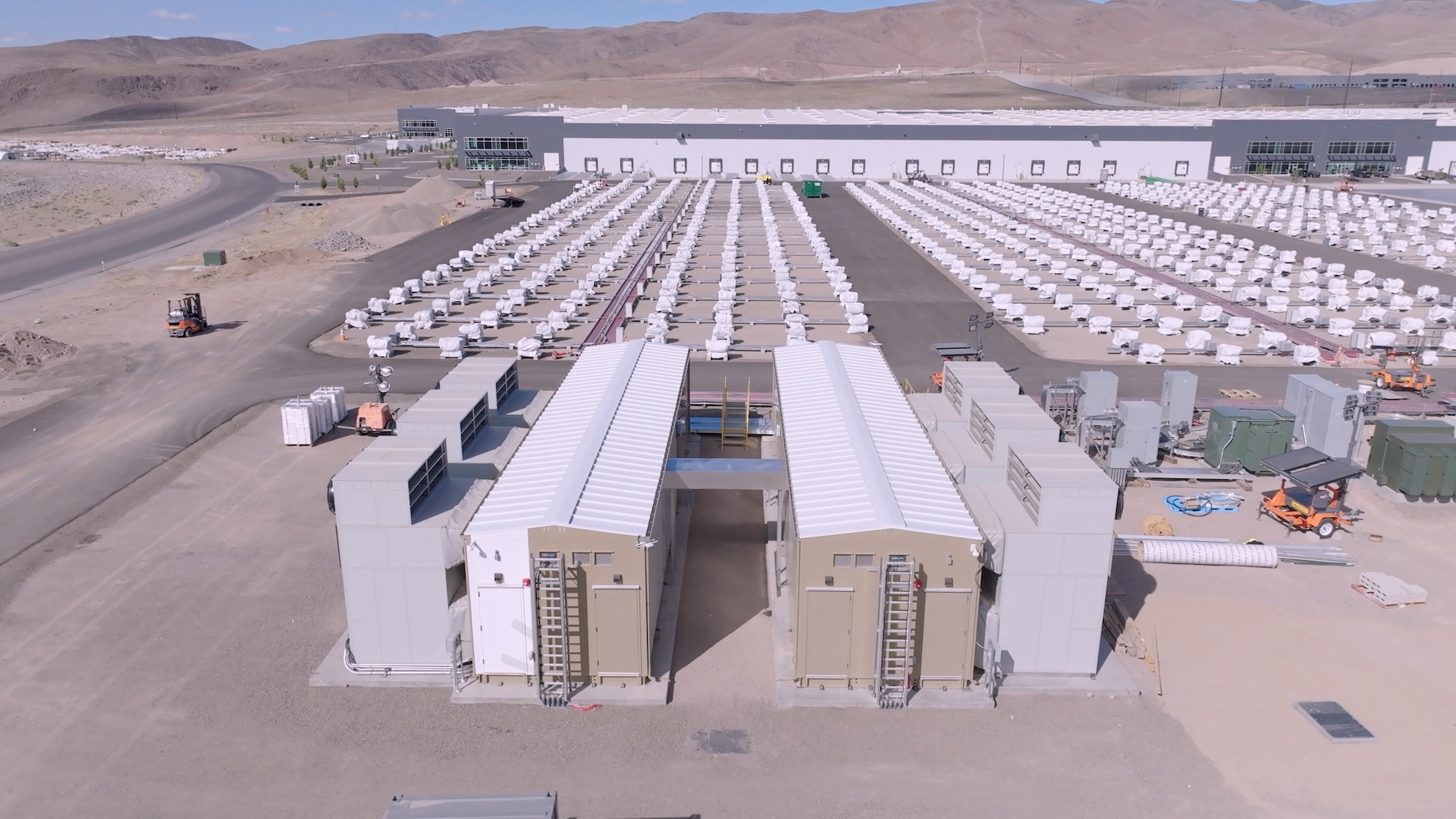
Blue Origin, the aerospace venture founded by Amazon billionaire Jeff Bezos, recently experienced a significant setback with the second attempted launch of its formidable New Glenn mega-rocket. The planned liftoff, initially scheduled for a Sunday afternoon, was ultimately scrubbed due to a confluence of challenging weather conditions, minor technical issues with ground support equipment, and the unexpected presence of a cruise ship that navigated too close to the designated flight path. This latest postponement injects further uncertainty into the timeline for New Glenn’s crucial second mission, highlighting the multifaceted complexities inherent in modern orbital spaceflight.
The Road to Launch: New Glenn’s Development and First Flight
Blue Origin’s journey into orbital launch vehicles began over two decades ago with Jeff Bezos’s vision to make space accessible. While widely known for its suborbital New Shepard rocket, which has carried numerous tourists and research payloads to the edge of space, New Glenn represents the company’s ambitious entry into the heavy-lift orbital market. Named after astronaut John Glenn, the first American to orbit Earth, the New Glenn rocket is designed to be a reusable, two-stage launch vehicle, standing an impressive 322 feet tall. Its first stage is powered by seven BE-4 engines, which also power United Launch Alliance’s Vulcan Centaur rocket, signaling a shared infrastructure within the American space industry.
The development of New Glenn has been a protracted affair, marked by several design iterations and a series of delays from its initial target launch dates. Announced in 2016, the rocket was initially projected to fly in 2020. However, the complexities of engine development, manufacturing, and stringent testing protocols pushed this timeline back significantly. The maiden flight, a critical milestone for any new launch system, finally occurred in January of 2025. This inaugural mission successfully propelled the rocket to orbit, demonstrating the fundamental capabilities of the New Glenn system. However, a pivotal element of Blue Origin’s strategy, the reusability of the first stage booster, was not fully achieved during this first attempt, as the booster experienced an anomaly and was lost before it could execute a controlled landing on its designated drone ship in the Atlantic Ocean.
This second flight, therefore, carries immense weight for Blue Origin. It is intended to be the first demonstration of the full reusability of the New Glenn booster, a capability that is central to the company’s long-term business model and its aspirations to be a major player in the global launch market. Successfully recovering and reusing the booster would mark a significant technical achievement and a crucial step towards validating the rocket’s economic viability.
Technical Hurdles and Environmental Variables
The decision to scrub a launch is never taken lightly, and in this instance, it was the result of a convergence of factors. Weather conditions, particularly in Florida’s Space Coast region, are a perennial challenge for launch operators. High winds, lightning potential, and upper-atmospheric wind shear can all pose significant risks to a rocket during ascent. Launch windows are often narrow, constrained by orbital mechanics, payload requirements, and range safety considerations. Even minor deviations from predicted weather patterns can force a delay or cancellation.
Beyond atmospheric conditions, the original report also cited "a few minor problems with launch pad equipment." Modern launch complexes are intricate systems, involving thousands of sensors, valves, and mechanical components that must all function flawlessly for a launch to proceed. Even seemingly small issues, such as a malfunctioning sensor or a minor leak, can cascade into larger problems if not addressed. Blue Origin’s meticulous approach to safety, a hallmark of the aerospace industry, dictates that any such anomalies must be thoroughly investigated and resolved before committing to a launch. This cautious posture, while frustrating for those awaiting liftoff, is standard practice and underscores the inherent risks involved in launching multi-million-dollar hardware and payloads into space.
Adding another layer of complexity was the intrusion of maritime traffic into the designated "keep-out" zone. Launch trajectories often cross vast stretches of ocean, and for safety reasons, specific areas must be cleared of all air and sea traffic during a launch window. This is to protect the public from potential debris in the unlikely event of a launch anomaly. The presence of a cruise ship, despite the company’s efforts to manage the launch window, created an unacceptable risk profile, forcing another delay. The increasing commercialization of both space launches and maritime travel along the Florida coast presents an evolving challenge for range safety officers, requiring tighter coordination and robust communication protocols.
The Broader Context: Commercial Space Competition
The stakes for Blue Origin extend far beyond the successful execution of a single mission. The company operates in an intensely competitive commercial space market, dominated by a few key players. SpaceX, led by Elon Musk, has established a formidable lead with its Falcon 9 rocket, which has redefined launch economics through its routine reusability. SpaceX’s larger Starship system, currently in advanced testing, promises even greater capabilities and lower costs. Other contenders include United Launch Alliance (ULA), a joint venture between Boeing and Lockheed Martin, and various international players like Arianespace.
For Blue Origin to truly compete, New Glenn must not only prove its reliability in delivering payloads but also demonstrate the economic advantages promised by its reusable design. The ability to refurbish and refly the first stage dramatically reduces the cost per launch, making space more accessible for a wider range of customers, from satellite operators to government agencies. Delays and booster losses, while sometimes unavoidable in the early stages of a new rocket program, add to development costs and can erode customer confidence, making it harder to secure future contracts in a market where reliability and schedule adherence are paramount.
This competitive landscape also influences public perception. With SpaceX frequently making headlines for its ambitious Starship tests and high-cadence Falcon 9 launches, Blue Origin faces pressure to demonstrate tangible progress and operational maturity. The market is increasingly demanding not just a ride to space, but a reliable, cost-effective, and frequent one.
Payload Significance: Science and Communications
The payloads slated for this second New Glenn mission underscore its importance for both scientific exploration and commercial communications. The primary payload is NASA’s ESCAPADE (Escape and Plasma Acceleration and Dynamics Explorers) mission, which comprises two small spacecraft designed to study Mars’ unique hybrid magnetosphere. Understanding how the solar wind interacts with the Martian atmosphere and how the planet has lost much of its water is crucial for comprehending planetary evolution and the potential for life beyond Earth. Delivering these delicate scientific instruments safely and precisely to their interplanetary trajectory is a complex undertaking that requires a highly reliable launch vehicle.
Additionally, New Glenn is carrying a technology demonstrator for Viasat, a global satellite broadband provider. This demonstrator is part of a larger NASA project aimed at advancing communication technologies for future space missions. Such missions are vital for developing the infrastructure needed for extended human presence in space, improved Earth observation, and enhanced global connectivity. The success of these payloads is critical not just for Blue Origin but for the broader scientific and commercial communities that rely on access to space.
Regulatory Landscape and Airspace Management
The Federal Aviation Administration (FAA) plays a critical role in overseeing commercial space launches in the United States. Its primary mandate is to ensure public safety, which includes regulating airspace, issuing launch licenses, and approving flight trajectories. The original article mentioned FAA restrictions on space launches due to a government shutdown, though Blue Origin was reportedly working with the agency to ensure Sunday’s launch could proceed. Government shutdowns can significantly disrupt the FAA’s operations, leading to staffing shortages and delays in processing critical permits and approvals, thereby impacting the entire launch industry.
The FAA’s rigorous oversight is a necessary safeguard, but it also adds another layer of complexity to launch operations. Coordinating with various stakeholders – including the military, maritime authorities, and local communities – to secure launch windows and clear restricted zones is a monumental task. As the volume of commercial space launches continues to grow, particularly from congested areas like Florida’s Space Coast, managing this intricate web of regulatory requirements and public safety concerns will become an even greater challenge. The incident with the cruise ship serves as a stark reminder of the delicate balance between facilitating space access and ensuring the safety of terrestrial activities.
Looking Ahead: The Path to Operational Success
With the second launch attempt scrubbed, Blue Origin’s focus now shifts to identifying the next available launch window. This process involves re-evaluating weather forecasts, addressing the minor launch pad equipment issues, and coordinating anew with the FAA and maritime authorities to secure a clear flight path. The company’s statement about "reviewing opportunities for our next launch attempt based on forecasted weather" suggests a pragmatic approach to a complex situation.
The journey to developing and operating a new heavy-lift rocket is inherently challenging, filled with unforeseen obstacles and the need for meticulous attention to detail. Every scrub, while frustrating, provides valuable data and an opportunity to refine processes and systems. For Blue Origin, the successful and repeated demonstration of New Glenn’s reusability is not merely a technical objective; it is a strategic imperative that will determine its position in the evolving landscape of commercial spaceflight. The world watches as Blue Origin continues its pursuit of its orbital ambitions, understanding that each step, even a delayed one, is part of the arduous path to establishing a robust and sustainable presence in space.





